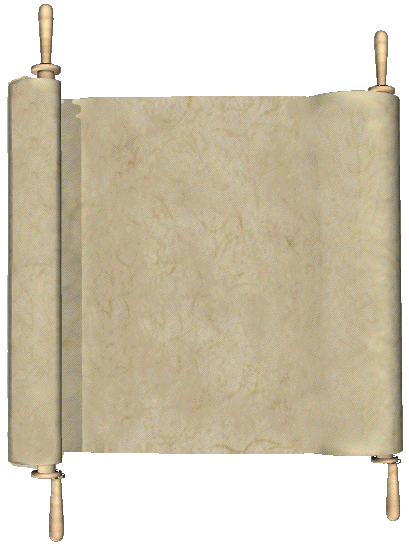
Any scroll meant to be viewed by manually unrolling may be called a handscroll. A scroll intended for continuous exhibition upon a wall may be called a hanging scroll.
A rotulus is a long manuscript scroll. Rotuli were used by the Egyptians, Greeks, and Romans, among others. There were predecessors to codices in the evolution of books.
Here's a blank scroll of parchment.

Examples of scrolls:

Attributed to Han Gan (Chinese, active 742-756),
Night-Shining White, T'ang
dynasty (618-907), 8th century, handscroll, ink
on paper, 12 1/8 x 13 3/8 inches
(30.8 x 34 cm), Metropolitan Museum of Art, NY. Night-Shining
White is the name of this horse, owned by the emperor of China.
See Chinese
art.

Mi Fu (Chinese, 1052-1107), Poem Written in a Boat on the Wu River,
Northern Sung dynasty
(960-1127), c. 1100, handscroll, ink
on paper, 12 1/4 inches x 18 feet
3 1/4 inches (31.1 x 557 cm), Metropolitan Museum of Art, NY.
See Chinese
art and horizontal.
![]()
Wen Zhengming (Chinese, 1470-1559), Bamboo, Orchids, Rock, and Calligraphy,
Ming dynasty, c. 1530,
handscroll; ink on paper;
signature: seals
of the artist in inscription;
seals: (upper) Wen Zhengming yin, (lower) Zheng-Zhung, Worcester
Art Museum, MA. See calligraphy.
![]()
Dao Ji (Shitao) (Chinese, 1642 - 1707 or
1708), Autumn Landscape, Ching
dynasty, 1701, hanging scroll;
ink and color
on paper, signatures:
Zing-Xiang chen ren, Dadizu, and Shitao; seals:
five of the artist, two of the collector Ouyang Lin dated 1907,
three of collectors in lower left, and four in the lower right
corner, Worcester Art Museum, MA.
![]()
Kaigetsudo Doshin (Japanese, active 1700-16),
Courtesan, Edo
period, hanging scroll; ink
and opaque color
on paper; signature:
Nippon giga Kaigetsu; matsuyo Doshin zu (a pleasure picture in
Japanese style by Doshin, a last leaf of Kaigetsu); seal:
Ando, Worcester Art Museum, MA. See kakemono
and ukiyo-e.
https://inform.quest/_art